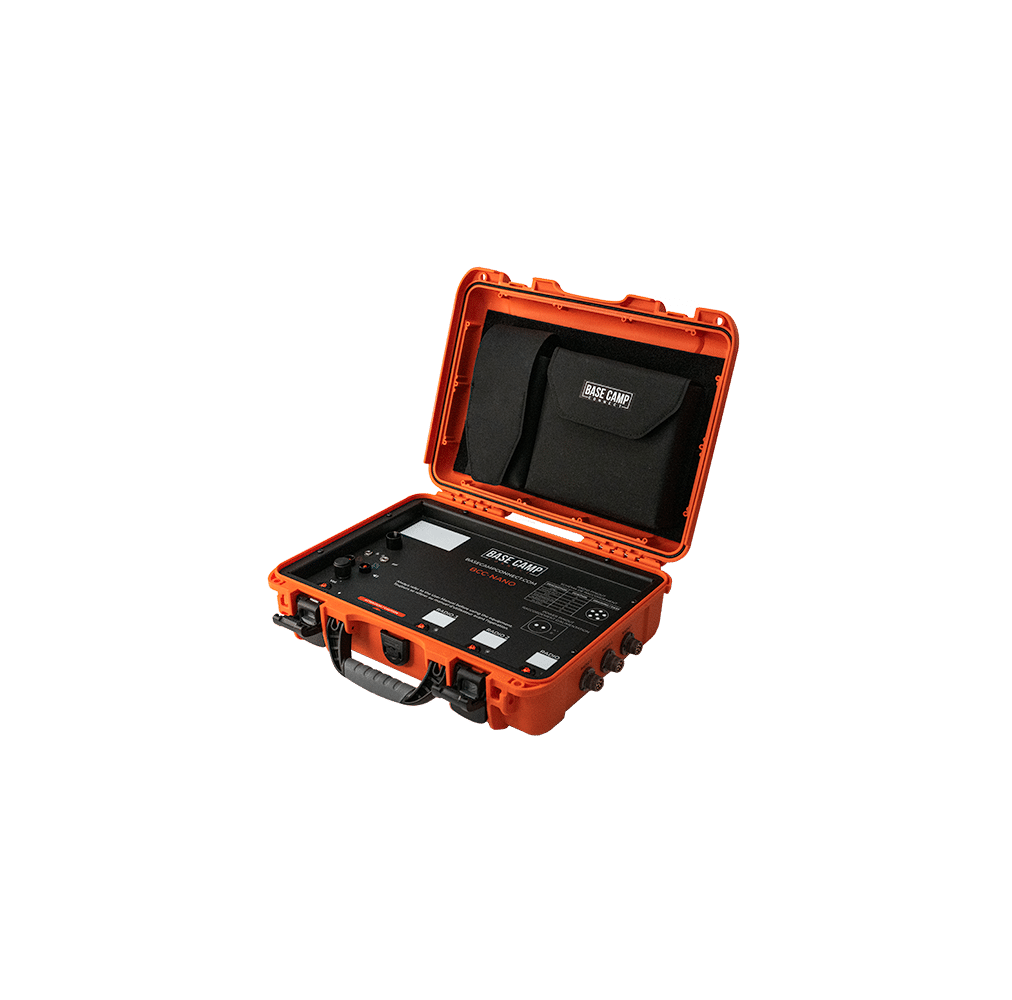DEFSEC Atlantic 2023, is a unique opportunity to network with other professionals in the aerospace, defense, and security industries. Taking place between October 3-5 at the Halifax Convention Centre, this event is presented by the Atlantic Canada Aerospace & Defence Association.
As the second-largest event of its kind in Canada, DEFSEC Atlantic 2023 promises to have a global reach with many international visitors. DEFSEC will be a combination of a trade show and a defense procurement conference with opportunities for networking, social events, presentations, panel discussions, and more. Base Camp Connect is honored to be a part of this years’ experience.
There are numerous threats currently facing Canada. The nature of these dangers makes it challenging to find solutions capable of addressing them. Finding standard solutions to the COVID-19 pandemic, election security, espionage, and terrorism is easier said than done. Undoubtedly though, maintaining a reliable and secure means of communication will be a common component of any solution designed to address these issues.
As we approach DEFSEC Atlantic 2023, reviewing some of Canada’s most pressing security threats is appropriate. According to the Canadian Security Intelligence Service, current threats facing the nation include the COVID-19 pandemic, foreign interference & espionage, election security, economic security, cyber threats, counter-proliferation, ideologically motivated violent extremism, politically motivated violent extremism, religiously motivated violent extremism, Canadian extremist travelers, and international terrorism. Other threats are internally driven, such as the underfunding of the military.
Let’s unpack a few of these dangers in more detail and see how reliable communications can help mitigate the potential severity of these threats.
Underfunded Military – Especially The Navy
With a coastline that stretches for 243,042 km, Canada’s ability to defend its shores touches each of the other threats listed below in one way or another. Many of the nation’s most serious threats require adversarial forces to step on Canadian soil. The first line of defense is the Canadian Navy.
At the start of 2023, the Canadian Navy consists of 12 frigates, 12 coastal defense vessels, four attack submarines, two offshore patrol vessels, eight patrol-class training vessels, and numerous auxiliary vessels. Additionally, the Royal Canadian Navy’s ranks number around 8,400 service members. Canada’s annual defense spending accounts for roughly 1.29% of GDP, far lower than other countries of its size and wealth.
The lack of military spending has left little to modernize the fleet. Canada’s Navy faces severe challenges in protecting its coastline, especially the Pacific, as the Indo-Pacific region becomes more contested, particularly between the United States and China. Increasing the defense budget seems unlikely as most Canadians do not support such growth.
To help address this issue, the nation should look for cost-effective improvements to the Navy. Upgrades in communications gear, renovating existing platforms, and investing in more active duty forces will help to meet future challenges without requiring the funds needed for new vessels.
COVID-19 Pandemic
The COVID-19 pandemic significantly impacted Canada. The country faced widespread outbreaks, overwhelmed healthcare systems, and implemented strict public health measures to curb the spread of the virus. The economy suffered as lockdowns and restrictions led to job losses and reduced economic activity. While these moves were necessary to combat the virus, they still took their toll.
Schools and businesses were forced to close temporarily, disrupting daily life and causing hardships for individuals and families. Thankfully, the government provided financial support to individuals and businesses to mitigate the effects of the pandemic.

Fighting the virus demanded the focus of the nation. These efforts all required a “whole-of-government” response. Coordination between various agencies and stakeholders could not have been successful without reliable communications equipment.
As was seen during the height and aftermath of the pandemic, supply and logistics networks were brought to a standstill in many ways. Having communications gear in place to coordinate moving around such limitations was crucial. Without reliable communications systems, adversarial forces can exploit the country during these vulnerable periods. The pandemic serves as an excellent example of why protecting our ability to communicate is essential for the nation’s safety.
Counter-Proliferation
It is an unfortunate reality that the proliferation of Chemical, Biological, Radiological and Nuclear (CBRN) weapons are a major threat facing Canada and the world. Commonly known as Weapons of Mass Destruction (WMD), some foreign states and terrorist groups seek to use CBRN weapons to terrorize Canada and its allies.
The nature of these weapons makes them challenging to detect. While bringing something like a nuclear warhead across the border may seem a bit far-fetched, something as small as an envelope, as seen in the 2001 anthrax attacks on the United States, can be just as dangerous. Canada employs many systems to protect against WMD. Some of the essential countermeasures used in Canada include border security, emergency preparedness plans, robust intelligence and surveillance activities, and working with partnered governments around the world.

All of these systems rely heavily on being able to communicate effectively. Border security, intelligence communities, and the military must all work together to prevent and respond to these types of threats. It is often the case that working with so many different entities means the communications equipment used is anything less than homogeneous. This presents a potential communication problem concerning interoperability.
Communications networks and communications equipment must facilitate the seamless flow of information between all stakeholders responding to CBRN threats. Solutions are available that help bridge the gap between radio nets, cellular networks, and secure communications assets. Equipment that facilitates open lines for information sharing and response, mitigates the effectiveness of these threats. The end state is a better outcome for all parties involved.
Cyber Threats
Like numerous other countries worldwide, Canada faces significant challenges across the digital landscape. Cyber threats will continue to be a concern as criminals and terrorists seek to engage in cyber-enabled crime, espionage, foreign influence, sabotage, and terrorist-related activities. Cyber threats come in many forms including hacking, data breaches, cybercrime, and attacks using ransomware.
The potential damage caused by cyber threats impact Canada’s national security, critical infrastructure, businesses, economy, and everyday citizens. The success of these attacks worldwide has led to the growing use of this threat as a weapon of choice. By some estimates, Canada witnessed a 20% increase last year in cyber-attacks compared to the previous year.
Thankfully, there are several ways in which reliable communications networks and robust communications equipment can help prevent and respond to cyber threats. Effective solutions can be broken into preventive measures and response measures.

Preventive measures include secure data transmissions, network monitoring and detecting, increased network and equipment resilience, and securing remote access. Before an attack occurs, the right equipment can help make systems within Canada more robust. Should one network or crucial piece of communications equipment fail, having backup systems can significantly diminish the damage of an attack. While preventing attacks is nearly impossible, reliable equipment and software can help keep data secure and prevent many threats from successfully breaching Canadian systems.
Response measures include incident response, incident recovery, and sharing information. Since there will be times when an attack is successful, reliable communications equipment allows for a fast response and recovery. Addressing an attack requires coordination between government agencies and stakeholders. With the right plan and gear, various stakeholders can share information, pool resources, and enact an effective plan to stop the threat from causing more damage.
International Terrorism
The worldwide community is a target for international terrorists. Whether guided by religiously motivated violent extremism, political objectives, criminal incentives, or other motivating factors, terrorists threaten Canadian and global security. Attacks can potentially cause widespread violence, economic destabilization, and loss of life.
As the world becomes more connected, both from a geopolitical and technological perspective, terrorist organizations will look for every possible way to exploit progress. Canada has witnessed violence from terrorists and must continue to take steps to prevent these attacks. One of the best methods for this is to work with partnered nations and organizations around the world.

In partnership with friendly entities, Canada continuously works to collect and share intelligence, develop counter-terrorism policies, plan for an emergency response to terror attacks, and foster public awareness and safety through these efforts. As seen in combating other threats facing Canada, reliable communications equipment is essential to making all these endeavors successful.
As we step into DEFSEC Atlantic 2023, we are serving present needs while looking forward to the future with our brand-new BCC-MICRO recently launched at CANSEC that does not emit RF waves. This new deployable communication solution is designed for use during classified missions requiring the highest level of secure communications.
Join Base Camp Connect at booth B402 to experience the groundbreaking BCC-MICRO, BCC-TVB and BCC-Tactical in action, as well as engage with industry leaders at DEFSEC Atlantic 2023. We hope to see you there!
Fill out the form here to show your interest in meeting us at DEFSEC 2023!
Have you enjoyed this article? Be sure to subscribe to our blog to catch the next one as soon as we publish!















